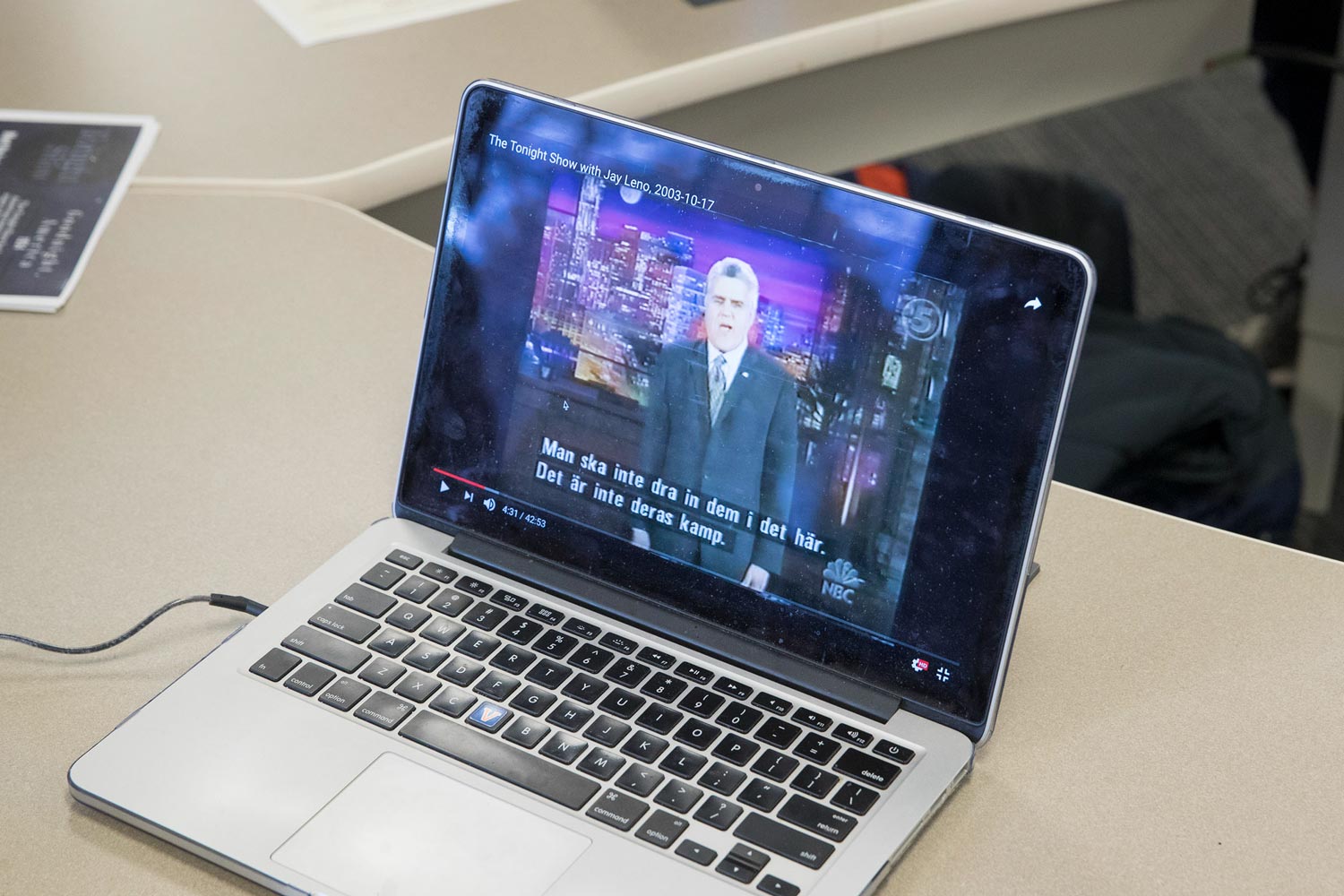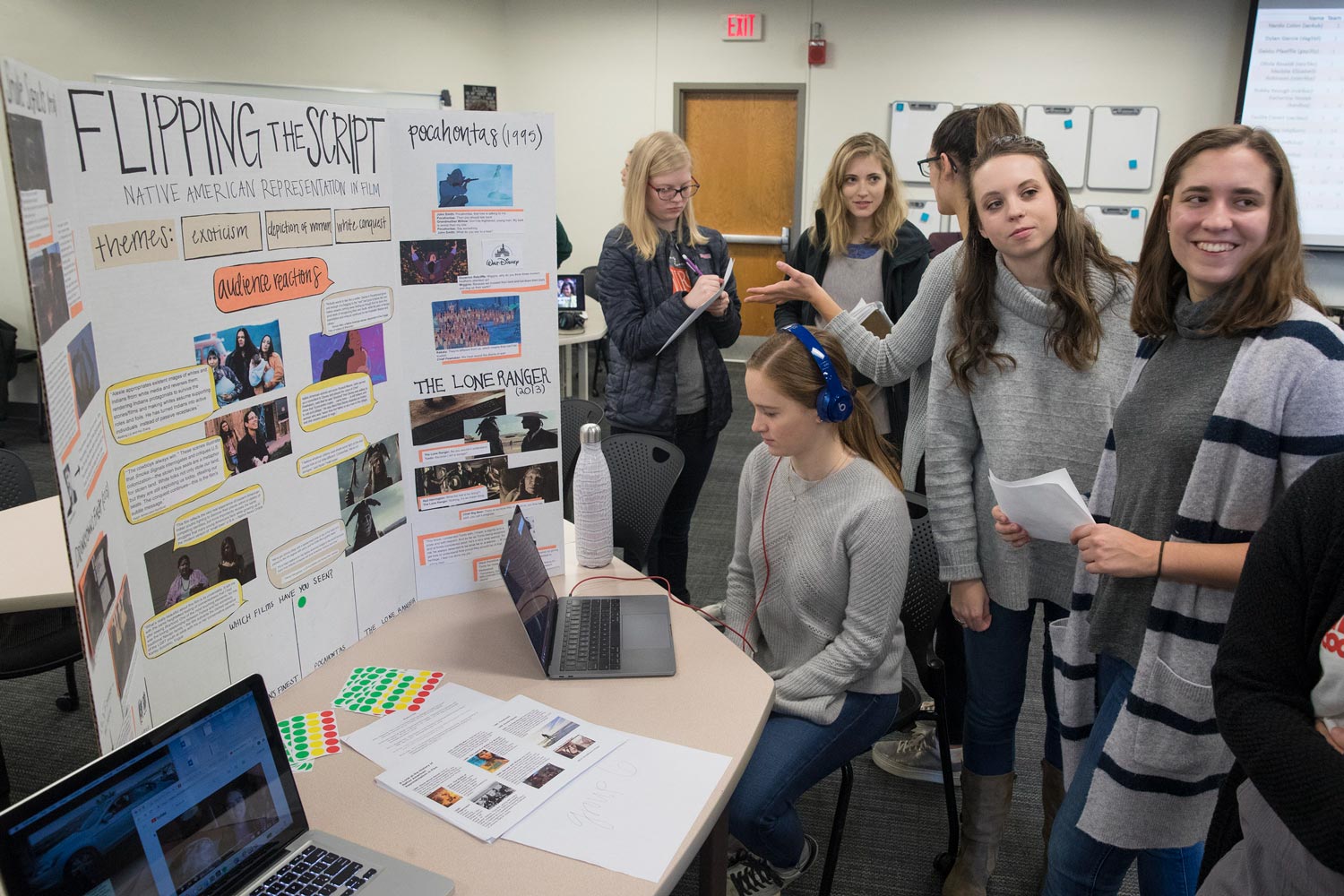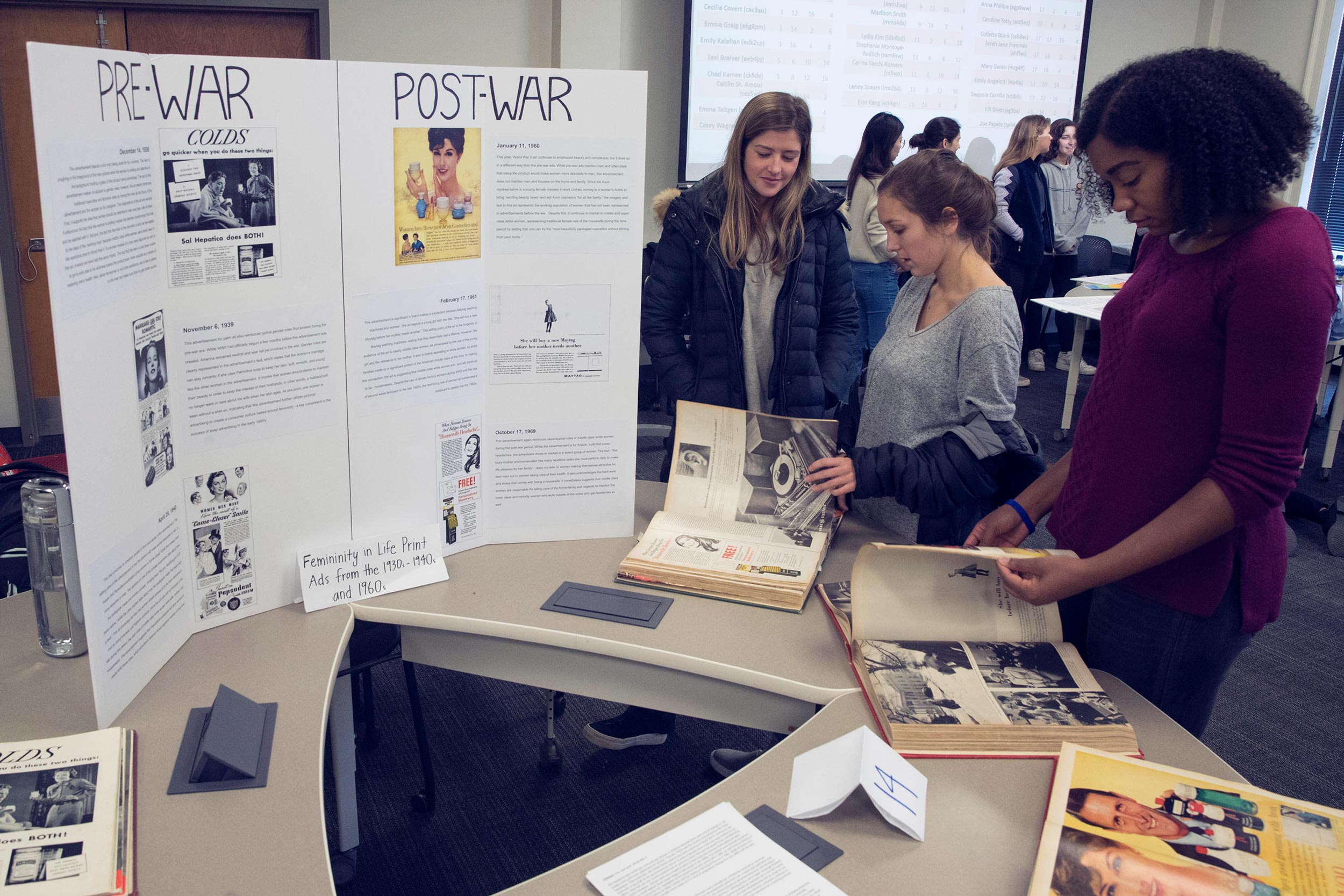For two days this week, room 325 in the University of Virginia’s Wilson Hall looked more like a swap meet than a media studies classroom.
On one table were back issues of Life magazine. On another were old Atari and Nintendo game consoles.
Propped on pedestals in the corner of the room were large posters featuring, among other films, “Guess Who’s Coming to Dinner?” and “Shaft.”
On a table toward the back was a Sony Walkman and a record player, next to a vinyl version of Michael Jackson’s “Thriller” album.
Welcome to MDST 3050, “History of Media,” a course taught (in two sections) by assistant media studies professors Kevin Driscoll and Keara Goin.
For their final projects, students were tasked with exploring the social consequences of media change. To that end, teams of students developed historical research questions based on concepts ranging from community and identity to time, space and memory.
“It was definitely different than anything I’ve had before, work-wise, for a course,” student Nan Craddock said. “It was cool to be able to explore and expand my research skills.”
With the help of UVA librarians, the teams were required to explore a range of media archives in search of materials to answer the questions. After analyzing the materials, the students communicated their findings through museum-style exhibits, rather than papers or presentations.
The goal: To understand the unique archival challenges presented by media of the 20th century.
“The hunt for appropriate artifacts is one of the joys of this project,” Driscoll said. “Given the overwhelming amount of information available through the internet, it is difficult to imagine how much of our media heritage remains inaccessible. Yet students quickly discover the gaps and blind spots in commercial services like YouTube when they attempt to study earlier periods in media history. Not only is most popular media poorly preserved, but even those materials that do turn up on the web are rarely given the context required for rigorous historical analysis.
“Students learn to appreciate the work that goes into maintaining and growing a substantial archive of historical media.”
One group of students focused on the evolution of “The Tonight Show.” The team set up three laptops that played clips from hosts Johnny Carson, Jay Leno and Jimmy Fallon. Accompanying each laptop were timestamps telling viewers exactly where to find specific content, such as political jokes.
“We examined how this pillar of American culture reflected on what was going on in America at the time, and how each host brings something different to the table in terms of humor and style,” student Emily Moliken said.
“Looking at ‘The Johnny Carson Show,’ some of his jokes don’t fit today’s politically correct standards. It’s just interesting to see how things have changed – how they interact with their guests, the celebrities they bring on and the overall structure of the show.”

Using video clips of Jay Leno, Johnny Carson and Jimmy Fallon, a group of students focused on the evolution of “The Tonight Show.”
Another group examined Life magazine ads pertaining to femininity that ran before and after World War II.
“From the pre-war ads, we found that a lot of it was advertised to women, but for men,” student Sarah Rose said. “You can see that in the pre-war ads, it was, ‘How to be pretty for your man,’ ‘How to take care of your man.’ In the post-war ads that we found, the stereotypes were still there in women at home and as the housewives, but it was much more of an equal view.”
In the students’ display were bound copies of the magazine that they checked out of Alderman Library.
“When I was looking through the ’60s ads, I thought I would see more change toward women – especially since the ’60s were such a revolutionary period for civil rights, second-wave feminism – so it was a little upsetting to see such stereotypical representations,” student Brielle Entzminger said. “But then we noticed that it was at least representations of women for themselves and taking care of their families, rather than buying things specifically for men. That was more encouraging, per se.
“It was very interesting to see the evolution of representation of women.”

This group of students in Driscoll’s class focused on Native American representation in the films “Pocahontas” (1995), “Smoke Signals” (1998), “The Lone Ranger” (2013) and “Drunktown’s Finest” (2014).
A group in Goin’s class tracked the evolution of how we listen to music and how that has changed the public and private consumption of it.
Their display included a phonograph, an eight-track player, a boom box, a Sony Walkman, an iPod and a laptop featuring Spotify.
“One of our biggest takeaways from this project was the change from delayed gratification to instant gratification,” student Kate Shaffer said. “With the phonograph, you had to go to the store to buy the record. Now, with services like Spotify, you have access to any song, at any time you want, in both the private and public atmosphere.”
Another group examined the career of Puerto Rican actress Rita Moreno.
“We learned that even though she’s such an accomplished actress, she’s had to fight through so much marginalization,” student Clara Doley said. “She took a seven-year hiatus after playing this main role in ‘West Side Story’ because people kept trying to cast her as the quintessential Latina woman. She was pigeonholed. She represented an entire community, and it basically homogenized their culture instead of allowing it to be as multifaceted as representative as it actually is.
“What’s interesting is as she became more of an accomplished actress, she was able to take on more roles with names that were anglicized.”
One of Goin’s favorite displays was one that explored black masculinity through film by examining themes in “Birth of a Nation” (1915), “Guess Who’s Coming to Dinner?” (1967), “Shaft” (1971) and “Menace II Society” (1993).
“It was very enveloping; they used their space very well and chose their artifacts very well and had a great handout,” she said.
Overall, Goin and Driscoll said they were “thrilled” with their students’ work.
“The questions they asked, the materials they selected and the exhibits they assembled demonstrated care, resourcefulness and ambition,” Driscoll said. “As I wandered around the exhibitions, I especially enjoyed listening to students discussing their work with each other, asking thoughtful questions and comparing notes.”
“Something I’ve learned about being at UVA,” Goin added, “is that the students always surpass my expectations.”
Media Contact
Article Information
December 7, 2018
/content/what-do-rita-moreno-shaft-and-eight-track-player-have-common

